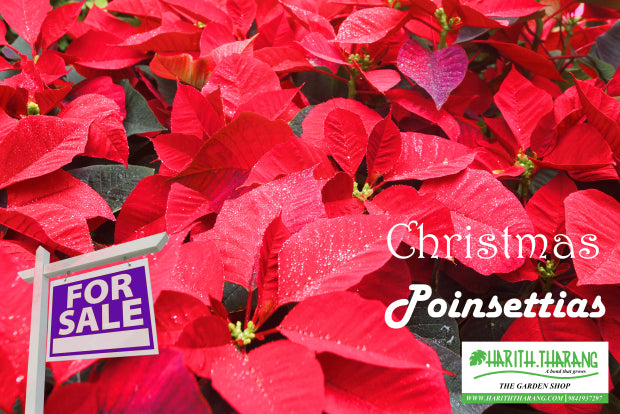
Article Detail
23 Dec
The festive poinsettia plant (Euphorbia Pulcherrima) takes center stage during the chilliest time of the year, but it loves a warm, tropical climate for growth. With its preference for warmer weather, it will grow outdoors year round in the U.S. Department of Agriculture plant hardiness zones 9 to 11. There it can grow up to 10 feet tall. In pots, the plant can be moved indoors to prevent it from being exposed to cold.
The colorful change that occurs in the poinsettia’s upper leaves, known as bracts, requires short periods of daylight and lengthy nights. You can look for a poinsettia to flower outdoors in early spring because of the shorter days during winter. For indoor poinsettias, you can force the flowering to coincide with the holiday season. Depending on the variety, a healthy indoor or outdoor poinsettia plant will display bright traditional red, pink, burgundy, white, marbled or speckled bracts with deep green leaves and foliage that grows the entire length of the stem.
A native plant of Mexico, poinsettias were used for medicinal purposes and for red dye by early American natives. The plant was presented to the first American ambassador to Mexico, Joel Roberts Poinsett, in the 1820s. Poinsett, who was also a botanist, returned to his home in the South where he nurtured the plant with success. Today, the Paul Ecke Ranch in California grows over 70% of all poinsettias sold. The Ecke family has worked for decades to proliferate the plant and are to credit for the abundance of poinsettias we enjoy during the holiday season.
HOW TO GROW AND CARE FOR POINSETTIAS
Poinsettias are difficult to start from seed or divisions. Use nursery transplants instead. To grow poinsettias outdoors, choose a well-draining location in full or partial sun with slightly acidic soil. A wind protective southern wall is the best location for this plant. Prune the plant every two months. Pinch the tips to encourage a bushier form with smaller bracts, or thin the branches without pinching to encourage the production of much larger bracts. Use a water soluble fertilizer every other week in the spring when new growth appears or feed once, choosing slow release pellets.
With special care and attention, you can successfully grow poinsettias in pots anywhere. For potted poinsettia plant success, water regularly to keep the soil just moist. During the summer, the plant can be placed indoors or out. When moving it outdoors, place it in a partially shaded location and gradually move it to full sun after two weeks. The plant must be moved indoors when nighttime temperatures fall below 55-60 degrees. Place the plant indoors in bright, indirect light. In the spring, cut the stems back 4-6 inches to stimulate new growth. Apply a houseplant fertilizer once a month unless the flowers are in bloom.
POINSETTIA PESTS AND PROBLEMS
Overwatering is the main cause of death for the poinsettia plant. Overdrying causes leaf loss and plant stress as well, so take special care to maintain a slightly moist soil for both indoor and outdoor plants. Poinsettias are cold and draft sensitive. When purchasing a poinsettia plant, even transporting it home can stress the plant if it is cold outside. It is important to be careful not to expose the plant to temperatures below 50 degrees and to protect it if you have to take it outdoors.
Contrary to popular belief, poinsettias are not poisonous to people, although some may be sensitive to the sap and experience a mild skin reaction. Pets, on the other hand, should be kept away from poinsettias as the plant is known to cause nausea and mild irritation, especially to puppies and kittens.
VARIETIES WORTH CONSIDERING
“Advent Red” is a newer variety with the traditional bright red color. This is a hardy variety for outdoor planting in the south and will stand up to wind and rain better than other varieties. It begins to flower the first of November.
“Red Glitter” is a stronger variety for indoor and outdoor growers. With a red or pink background and white spots and splotches, it has a unique looking bloom.<
“Winter Rose” is a beautiful potted variety whose long lasting bloom remains all through January and into February. The bracts curl under, adding dimension to its appearance.


